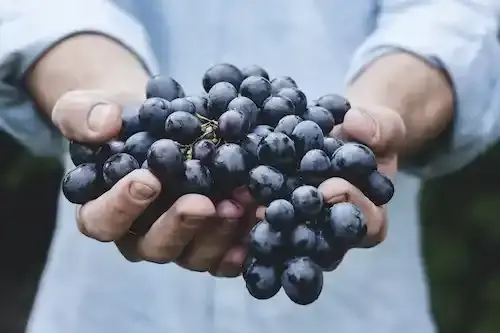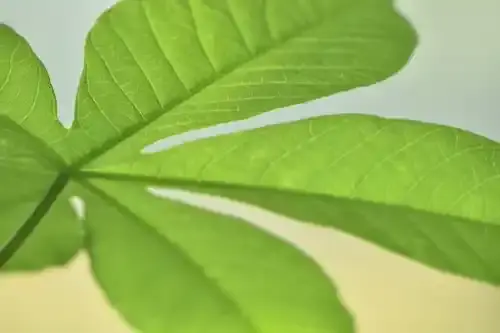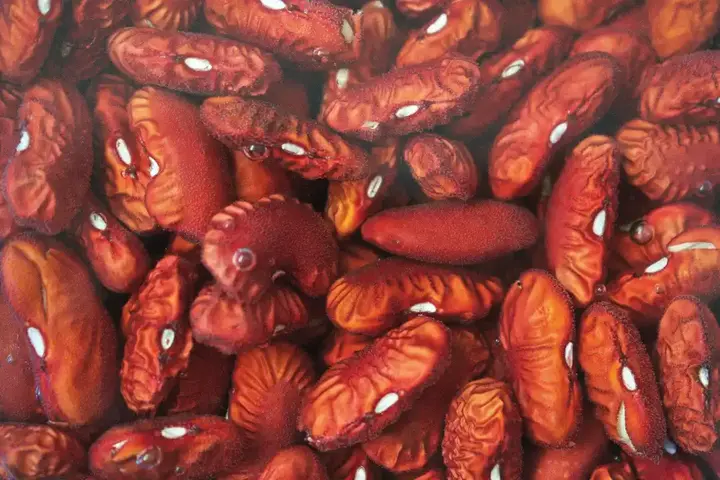Eating on the brink: the world's seven most dangerous foods
It's true that we should all know a lot about the foods we eat, but we usually focus more on their fat content or sugar levels, not whether consumption will harm or kill us.
Show key points
- While people often focus on fat and sugar content in food, they rarely consider that some foods can cause severe harm or even death.
- Fugu, a Japanese delicacy, contains a deadly neurotoxin and must be prepared with surgical precision to avoid fatal poisoning.
- Consuming unripe ackee fruit can lead to Jamaican vomiting sickness, which may result in coma or death due to a toxic compound called hypoglycine A.
- ADVERTISEMENT
- The Korean dish sannakji poses a choking hazard since the live octopus tentacles can latch onto a person’s throat if not thoroughly chewed.
- Hakarl, a fermented Icelandic shark dish, contains toxins that can cause serious health issues unless detoxified through traditional aging processes.
- Rhubarb leaves are not edible because they contain oxalic acid, a substance that can lead to kidney failure if ingested in large enough quantities.
- Red kidney beans must be soaked and fully cooked, as their raw or undercooked state contains phytohaemagglutinin, a toxin responsible for severe food poisoning.
However, there are plenty of foods that will do this, from causing stomach problems to being fatal.
Here we'll take a look at 7 of the deadliest foods in the world as well as some facts about each.
However, keep in mind that this may not be a definitive list for any sequential order.
1. Fogo, also known as the blowfish

Fugu, or puffer fish, is at the top of the list of dangerous Japanese delicacies. It is the most toxic food in the world and must be prepared intricately to prevent it from killing its recipient.
Fugo contains lethal amounts of tetrodotoxin in its organs, especially the liver. This poison blocks sodium channels and paralyzes muscles while the victim remains fully conscious. Eventually, the victim becomes unable to breathe and dies of suffocation.
Recommend
To prepare fugu safely, the chef must know his way around fugu as well as the back of his hand, getting rid of the eyes, brain, ovaries, liver and intestines with precision. These parts of the fish are lethal because they contain tetrodotoxin. It is a neurotoxin that is 1,200 times more deadly than cyanide, and only one fugo has enough poison to kill 30 adults.
If someone eats only one small slice of these parts of fugo, they can die of respiratory paralysis within a day. However, most of the people who die from fugu poisoning are the ones who prepared the fish themselves.
2. Acai fruit

Aki, the national fruit of Jamaica, in its unripe form has been banned in the United States since 1973. When immature, this fruit contains a toxic substance called hypoglycine A, which disrupts blood glucose production and increases the risk of hypoglycemia (low blood sugar) leading to the risk of coma or even death. Seeds should never be eaten, as they are highly toxic.
In order to enjoy acai fruit safely, you need to wait until it is fully ripe on the tree, and to be doubly safe, boiling it before eating it will also help lower fruit toxin levels. You'll know that the acai is cooked once its red outer shell opens on three white beads. If the flesh of the fruit is still yellow in color, do not eat it, as it is still unripe.
Eating an unripe piece of acai is known to cause Jamaican vomiting disease, which, after much vomiting, can push a person into a coma, and sometimes even death.
3. Snackji

If you don't bother eating shimmering and sticky tentacles, ask for snacks. This Korean dish consists of freshly prepared live small octopus claws and sliced for daring foodies.
Unlike fugu or aki, snacks are not poisonous. However, customers can suffocate to death if they don't eat these twinkling tentacles properly. Suction pads on cut sensors can stick to the roof of your mouth or inside your throat, blocking your airway and causing you to suffocate to death.
About six people die each year for trying to eat snacks. So be sure to chew, chew and chew if you don't want to find yourself stuck in a difficult situation.
4. Hakarl

This traditional Icelandic dessert dates back to the Vikings. Hakarl is a type of heavily fermented Greenland shark. This meat is toxic, containing high levels of trimethylamine oxide and uric acid, which, if ingested, can cause severe poisoning, intestinal upset, neurological effects, and can sometimes lead to death. However, these toxins can be modified by leaving them to rot.
To prepare this dish safely, sharks were traditionally buried under the sand for months in order to modify the toxins, and then hung to dry. Nowadays, this process is commonly performed in containers.
If the smell and tart and fermented taste aren't enough to deter you, most people agree that the residual taste is best described as urine. Perhaps that is why it is often washed down with a dose of local Icelandic alcoholic beverages. Even worse, a poorly prepared piece of hacarl can lead you to experience some uncomfortable side effects.
5. Rhubarb

Moving on to the most common foods, you may be surprised to find this unpretentious plant on the list. It is commonly used to make jams and pies, as the rhubarb stalk is perfectly good to eat, but stay away from the leaves.
In fact, the leaves of this plant contain oxalic acid, which is toxic to the kidneys and can kill you if you eat too much of it. A 143-pound (65 kg) adult will need to eat between nine to 18 pounds (four to eight kilograms) of rhubarb leaves for that to happen, but even if only a few leaves are eaten, you are likely to experience a number of problems, and annoying side effects, such as throat and mouth burning, nausea, difficulty breathing, diarrhea, and more.
6. Cassava

Cassava, also known as cassava, is a common tropical root commonly used to make tapioca and is a staple in Latin American and Caribbean cuisines. However, raw cassava contains the toxic substance cyanide, so it is necessary to prepare it properly.
There are two types of cassava: sweet and bitter. Bitter cassava is harsher but has a higher content of cyanide. Depending on whether cassava is sweet or bitter, its preparation for safe consumption varies. Only sweet cassava needs to be cooked to be safe to eat, while bitter cassava needs to be grated, soaked and then cooked to reduce cyanide levels.
7. Red beans

Perhaps the most surprising food on this list is red beans. This staple is a favorite in many dishes because it provides protein, fiber, vitamins and minerals. But in their raw or undercooked form, red beans are highly toxic, due to their high content of the plant agglutinin.
Phytohaemagglutinin is a plant protein that causes red blood cells to clump together, leading to moderate to severe food poisoning symptoms, and can also damage your gut. In order to reduce the hemoglutinin level in the beans, they must be soaked and then boiled long enough (exact times vary depending on the cooking method).








